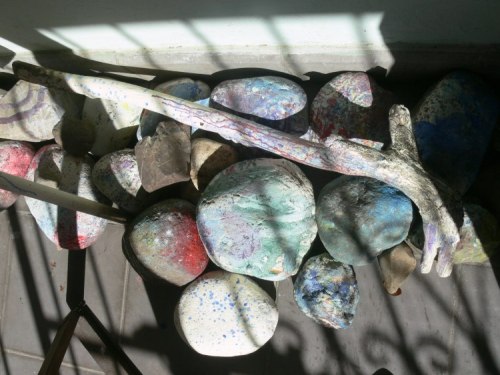(Last) Call for Submissions:
New Issue of e-misférica “Caribbean Rasanblaj”

Previously, we announced a call for submissions for e-misférica, Caribbean Rasanblaj [see previous post Call for Submissions: Caribbean Rasanblaj]. E-misférica invited submissions of scholarly essays, artist presentations, and reviews of books, performances and films for its 11.2 issue, a special issue edited by Gina Athena Ulysse (Wesleyan University). The deadline for completed essays has been extended to September 15, 2014.
Rasanblaj (n) Resist the impulse to translate, pronounce it first. Think consciously of the sound. Let the arch of the r roll over the ah that automatically depresses the tongue; allow the hiss in the s that will culminate at the front of the teeth to entice the jaw to drop for the an sound while un-smacking the lips will propel the bl surrounding the depressed ah again ending with j. Play with its contours. Know what this word feels like in your mouth. In Haitian Kreyòl. 3 syllables. Ra-San-Blaj.
Defined as assembly, compilation, enlisting, regrouping, (of ideas, things, people, spirits. For example, fè yon rasanblaj, do a gathering, a ceremony, a protest), rasanblaj’s very linguistic formation subverted and resisted colonial oppression (M.Condé). “Consider that Article 16 of the 1685 French Code Noir forbade slaves of different masters to gather at any time under any circumstances.” Its etymology and significations index the histories through which it emerged.
Rasanblaj: Catalyst. Keyword. Method. Practice. Project.
Rasanblaj issues a provocation to reframe discursive and expressive practices in the Caribbean (and its diasporas). Rasanblaj requires communal presence from the engaged to the radical, and is inter-active from the grassroots level rather than imposed from above. Considering the embodied visceral in the structural, it invokes Audre Lorde’s feminist erotic knowledge in its fullest dimensions from the political, to the sensual and spiritual (M. Sheller). It calls upon us to think through Caribbean performance and politics, recognizing the crossroads not as destination, but as point of encounter from which to move beyond. Indeed, with unequivocal evidence that the past and the future exist in the present (C.L.R. James, M-R. Trouillot), rasanblaj not only presupposes intent and method but also offers possibilities for other modalities and narratives. Thus, it allows us to contemplate the performative in subjectivity, agency, communities and citizenship that constitute Caribbean futures (B. Meeks), with the Marvelous and utopias imagined as possible realities (S. Césaire, J. Muñoz). An explicitly decolonial project, rasanblaj demands that we consider the limited scope of segregated frameworks to explore what remains excluded in this landscape full of life, yet ridden with inequities and dangerous memories (M. J. Alexander).
Guidelines: Please submit completed essays by September 15, 2014; advance queries and abstracts are welcome. To submit multimedia presentations and reviews, please contact the editors with proposals not later than August 17, 2015, with texts and materials due September 15.
For this issue, e-misférica will accept submissions in English, Spanish, Creole, French and Portuguese. All contributions, proposals, and consultations should be sent to the editors at hemi.ejournal@nyu.edu. Guidelines and style sheet can be found at http://hemisphericinstitute.org/hemi/en/participate.
For more information, see http://hemisphericinstitute.cmail1.com/t/ViewEmail/t/0E2542A34C7D7700/045EE4F6D7B178782540EF23F30FEDED
Also see http://caribbean.commons.gc.cuny.edu/2014/07/28/caribbean-rasanblaj/
[Image above: “Las islas/The Islands,” assemblage by Puerto Rican artist Miguel Conesa Osuna; see more at http://www.angelfire.com/co2/conesaosunamiguel/ .]
